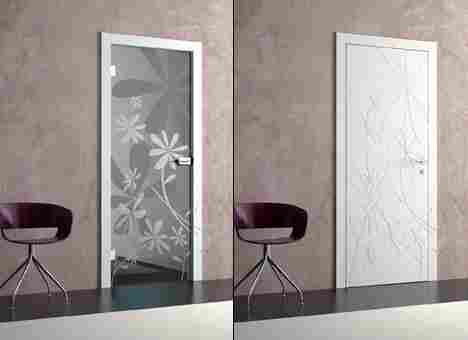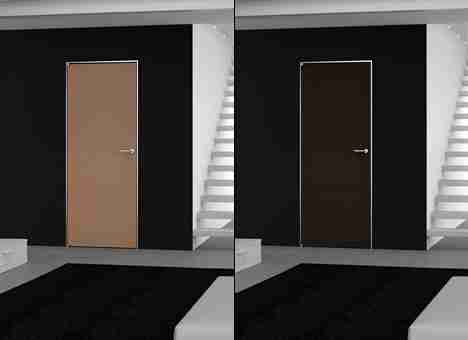Formed from the dense carbon mesh and concrete cast, the Cube will comprise of two main components.
Henn, an architecture firm based in Germany, recently unveiled the concept for the world’s first building made from carbon-reinforced concrete in close collaboration with researchers at the Technical University of Dresden (TUD). The so-called Cube will primarily function as an exhibition space and research facility for the university’s students, and will also house a classroom and small kitchen. Formed from the dense carbon mesh and concrete cast, the Cube will comprise of two main components, a precast box that will make up the floor and walls, and a double-curved roof, twisted from the bendable carbon-reinforced concrete.
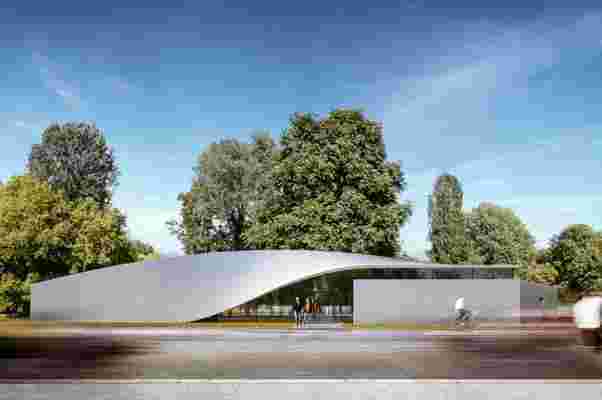
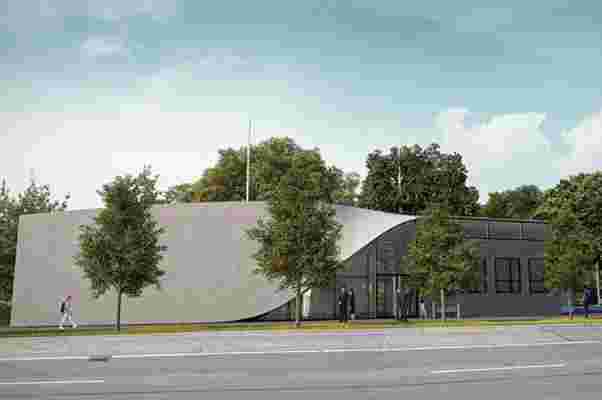
The Cube will function as a central hub for university students where they can gather for research and learning. Researchers from TUD have been researching the functionality of carbon-reinforced concrete since 1998. Now, in collaboration with Henn Architekten, the newly developed concrete building material can be put to the test. Carbon-reinforced concrete essentially replaces steel rebar with carbon fibers to maintain concrete’s industrial strength while reducing the amount of concrete used for construction.
Henn describes, “Carbon concrete could contribute to more flexible and resource-saving construction processes, and switching to carbon concrete could reduce the CO2 emissions from construction by up to 50 percent.” The Carbon Concrete Composite is developed through a process of thermal decomposition called pyrolysis that binds together carbon fibers to produce carbon fiber yarn, which creates a dense mesh that unites and strengthens the concrete. The removal of steel rebar makes carbon-reinforced concrete four times lighter than traditional concrete building material. Carbon-reinforced concrete also lasts longer since the carbon mesh is rust-proof and its technical makeup inherently evades the threat of oxidation. Inside, the Cube houses a single classroom, research facilities, an exhibition space, and a small kitchen.
The single unit of carbon concrete proves the versatility and malleability of the building material during the building’s development stages. “The benefit is that you can make the concrete much thinner while being able to carry heavy loads, so you can design completely different shapes. There are some research examples of super-thin concrete building components or benches or reinforcements. The aim is to get away from the huge amounts of concrete that are being used today.”
The Cube’s final form merges its ceilings and walls into a single unit, as Henn explains, “The design reinterprets the textile nature of carbon fibers through the fluid merging of ceiling and walls in a single form, suggesting a future architecture where environmentally conscious design is paired with formal freedom and radical rethinking of the most basic architectural elements. Wall and ceiling are no longer separate elements but functionally merge into one another as an organic continuum.” Ditching the rigidity of steel rebar for more versatile building material like carbon-reinforced concrete allows architects to design structures in new shapes and with fewer structural parameters. Additionally, the lightweight nature of carbon-reinforced concrete means less building material used and CO2 emissions released during construction.
Designer: Henn Architekten and the Technical University of Dresden
This off-grid cabin is a solar-powered, uses locally sourced timber and features a triangular roofline!
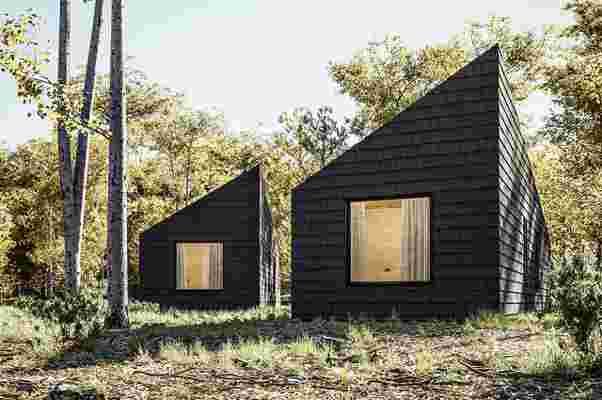
Inspired by the local area’s shingled roofs and facades, Thorpe clad Canton House’s trio of cabins, from top to bottom in blackened, locally sourced timber.
Hotels are designed to immerse us in unfamiliar worlds. Bringing us to tropical coastlines and jagged cliff sides, hotels are meant to enhance the local area’s best-known features. Marc Thorpe, architect, and designer extraordinaire, recently unveiled his design for Canton House, a cluster of off-grid cabin hotels in the forest of Romania’s Carpathian Mountains that are built from locally harvested timber and inspired by the surrounding area’s vernacular architecture.
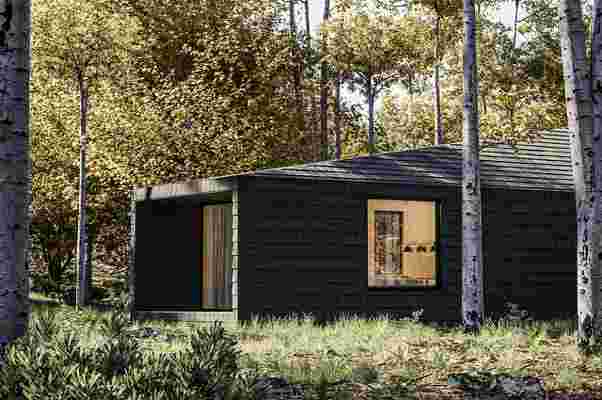
In Romania, rural towers and spires of religious centers are often defined by their fully-shingled wooden construction. Inspired by the local area’s shingled roofs and facades, Thorpe clad Canton House’s trio of cabins, from top to bottom in blackened, locally sourced timber, wrapping the exterior facades in uniform wooden shingles. The triangular roof stems from Canton House’s rectangular front facade.
From the front, Canton House appears as a simple, rectangular cabin framed with wooden shingles. Whereas from the side, a triangular roof gives Canton House some height and a dramatic facade. Uniform in design, the Canton House comes outfitted with a kitchenette, bathroom, bedroom, utility closet, and storage rooms finished in plywood. Evoking the spire’s reach for the high heavens, Thorpe built each cabin with an elongated triangular roof that gradually pitches upward from the cabin’s rectangular side facade. Marc Thorpe describes the cabin’s triangular profile, “The cabins are grounded into the terrain with their low horizontal profile to pronounce themselves with a sharp, vertical, [and] triangulated roofline.”
The sharp vertically pitched roof contrasts nicely with the rough and rugged terrain of the Carpathian Mountains. Careful not to disrupt the area’s wooded landscape and to maintain the cabin’s initial off-grid aspirations, Marc Thorpe equipped each cabin hotel with a solar kit and roof to ensure the cabin has plenty of renewable energy available for power. Each solar kit comes with a 1800W solar generator to provide backup power for the four 100W 12V mono solar panels that line the cabins’ roofs. Inside, guests enjoy a minimal interior that’s lined and finished in plywood. Built as supplementary retreats for guests of the area’s main hotel, Tara Luanei, Canton House offers a respite in nature that’s unique to the Carpathian Mountains.
Designer: Marc Thorpe Design
Small Budget? A New Door Can Work Wonders
The Iosa Ghini Collection is a collection of artful modern styled doors to liven up even the most boring spaces. The collection spans the gamut with art nouveau, complete with floral motifs, sweeping arches that turn in on itself, and overlapping lines. Not your cup of tea? How about textural surfaces? The Interprets Textrix series screams luxury with its leather finishes and detailed trim. Still not feeling it? How about the Materia line with its carved reliefs, a play between fine oak and cold metal.
Designer: Massimo Iosa Ghini
